TORI
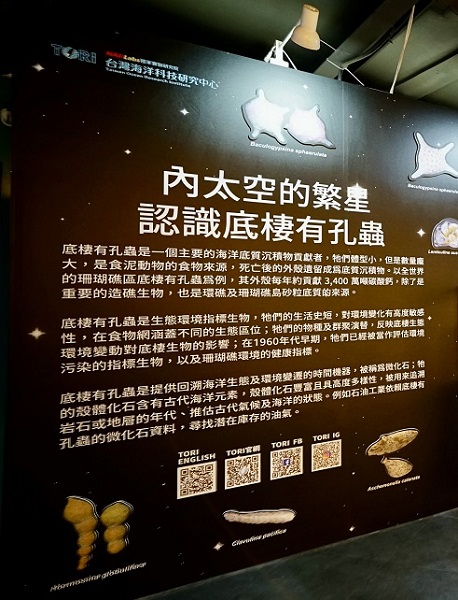
Benthic foraminifera, Hidden Gems in the Ocean
Benthic foraminifera are major sources of marine sediments. Though small in size, they exist in abundance and serve as foods for deposit-feeding organisms. Their shells, left behind after death, turn into sediments on the seabed. Take the benthic foraminifera appearing in global coral reef areas for example. Their remaining shells produce approximately 34 million tons of calcium carbonate annually. Apart from being key reef builders, they are also important components of the sand substrates of atolls and coral reef islands.
Benthic foraminifera are ecological indicators. Despite having a short lifespan, they are subject to environmental change. The ecological succession of benthic foraminifera reflect the impact of environmental change on animals that live on the sea floor, also called benthos. Since the early 1960s, they have been used as bioindicators for environmental pollution and healthy coral reef environments.
Benthic foraminifera are known as “microfossils” that pROVide a window on past marine ecology and environmental change. -The wide variety of their fossilized shells makes them extensively utilized to determine the age of rocks or strata, predict the climate of ancient earth, and understand the states of past oceans. For instance, the petroleum industry relies on the fossil data of benthic foraminifera to prospect for potential oil and gas reserves.

1. The Name Origin of "Foraminifera"
The term "Foraminifera" is derived from Latin, describing the porous shell of these organisms and their pseudopodia sticking out of the apertures.
2. The Habitat of Foraminifera
Foraminifera are widely distributed in various marine environments, ranging from the equator to polar regions, shallow to deep seas, substrate sediments, water columns, and other habitats where they attach themselves to plants and algae. Studies have also discovered benthic foraminifera in freshwater areas and in humid environments on land. They don’t have a shell or just have a simple-structured , inconspicuous shell. Molecular phylogenetic analysis indicates that these shell-less benthic foraminifera may have appeared earlier than the fossil records suggest, thus no trace left.
3. The Taxonomic Classification of Foraminifera
Foraminifera are primarily classified based on the composition and characteristics of their shells. For example, agglutinated benthic foraminifera secrete organic matter. Agglutinating sediment particles or animal remains will form their exoskeletons. Glassy and ceramic shells are typically composed of calcium carbonate. Classification can also be made according to shell shapes, chamber shapes, aperture types, and external ornamentation of chamber walls.
4. The Significance of Foraminifera in the Ocean
The fossil records of foraminifera are complete, spanning from the Cambrian Period to modern times. Therefore, the records are essential for stratigraphic correlation reference. Due to their high sensitivity to seawater temperature and chemical reaction conditions, they serve as excellent indicators of ancient climates and past ocean states. For instance, foraminifera with low levels of environmental tolerance in coral reef areas can function as bioindicators for healthy coral reef environments.
NLAC
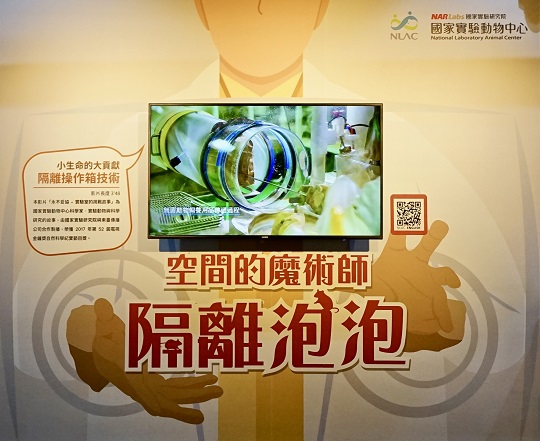
The television documentary series "Trailblazers – Stories from the Laboratory" tells the story of scientists from the National Laboratory Animal Center and their contributions to animal testing and scientific research. Produced by Dong Tai Films in collaboration with the National Applied Research Laboratories, the program won Best Natural Science Documentary at the 52nd Golden Bell Awards in 2017.
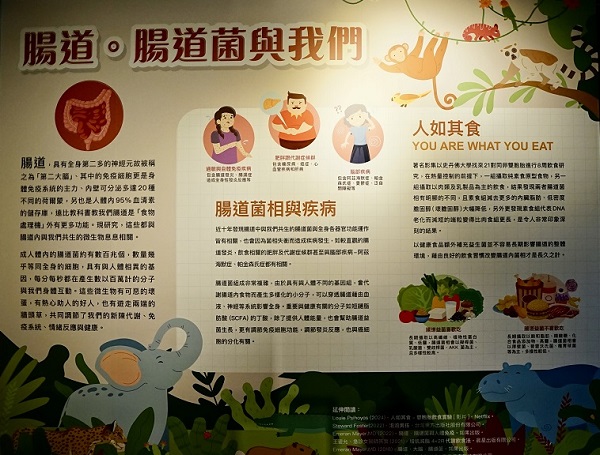
Gut Microbiota and Us
The intestines, often referred to as the "second brain," contain the second most abundant neurons in the body. Their immune cells serve as the pillar of the body's immune system, and their inner lining can secrete up to 20 different hormones. Additionally, 95% of the body's serotonin is stored there. These functions are closely related to the resident bacteria in them. The intestines are more than "food processors."
There are hundreds of trillions of gut microbiota in the body of an adult, almost equivalent to the number of cells in the entire body. The DNA makeup of these bacteria is distinct from that of the human body, and they interact with our bodies by producing millions of molecules every second. Moreover, these microorganisms help regulate our metabolism, immune system, emotions, and overall health.
Gut Microbiota and Diseases
Over the past decade, scientists have discovered that the microbiota that coexist with us in the intestines are associated with the functioning of organs throughout the body. Imbalance of gut microbiota can lead to disorders such as inflamed bowels, diet-related obesity, and metabolic syndrome. The occurrence of neurological disorders such as Alzheimer's disease, Parkinson's disease, and depression is also related to imbalance of gut microbiota.
The composition of gut microbiota is highly complex. Due to their different genetic makeup from humans’, they will break down foods in the gut and produce various molecules. Moreover, they can act on the entire body through the bloodstream and the nervous system. Health-related molecules like butyrate, a kind of short-chain fatty acids (SCFAs), pROVide energy the body needs, boost the growth of probiotics, regulate the function of immune cells, help reduce inflammation, and even affect cancer cell differentiation.
“You Are What You Eat”
In a notable study, 21 pairs of identical twins underwent an 8-week dietary intervention. With their calorie intake controlled, one group consumed a whole-plant-based diet, while the other consumed a diet primarily consisting of meat and dairy products. The results showed significant differences in the gut microbiota between the two groups. The vegetarian group showed greater reduction in visceral fat and low-density lipoprotein cholesterol (LDL), also called bad cholesterol. Furthermore, an impressive result was that the vegetable-eating group’s telomeres, which are linked to DNA aging, were found to be longer than those of meat-eaters, which pROVed that they were healthier.
Supplementing probiotics with healthy foods alone may not have a lasting impact on the overall gut environment. Long-term changes in gut microbiota are best achieved through adopting healthy dietary habits.
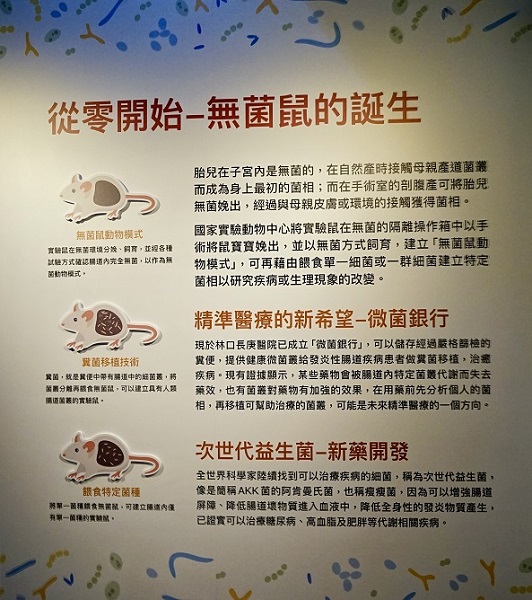
Starting from Scratch - The Birth of Germ-Free Mice
Fetuses in the womb are germ-free. During natural childbirth, they acquire their initial microbiota through exposure to maternal vaginal flora. However, During Cesarean delivery, babies are also germ-free but subsequently acquire their microbiota through contact with their mothers’ skin or the environment.
Researchers at the National Laboratory Animal Center deliver germ-free laboratory mice by performing surgery in isolation boxes. They are then raised in a germ-free environment, with a "germ-free mouse model" established. Specific microbiota can be introduced through the feeding of one single bacterium or a group of bacteria to study diseases or physiological changes in the mice .
A New Hope for Precision Medicine - Microbiota Bank
Chang Gung Memorial Hospital, Linkou, has set up a "Microbiota Bank," which stores rigorously screened fecesthat pROVide healthy microbiota for fecal microbiota transplantation on patients with inflammatory bowel disease. Evidence suggests that the efficacy of certain drugs may be offset by specific gut microbiota , while some microbiota can enhance the effects of drugs. It is a promising trajectory for precision medicine in the future to analyze a patient's microbiota before administering medication and then transplanting beneficial microbiota as a form of treatment.
Next-Generation Probiotics – New Drug Development
Scientists worldwide have discovered bacteria that can aid the treatment of diseases, known as next-generation probiotics. One example is Akkermansia muciniphila, AKK bacteria or slim bacteria for short. They strengthen the intestinal barrier, reduce the entry of harmful substances into the bloodstream, and lower the risk of systemic inflammation. The bacteria have been found to be effective at treating metabolic-related diseases such as diabetes, hyperlipidemia, and obesity.
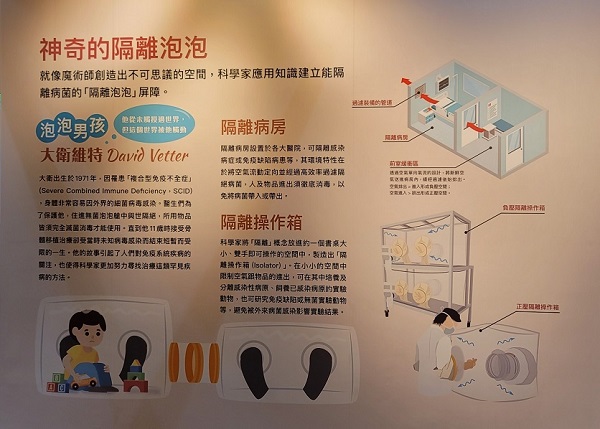
Magical Isolation Bubbles
Scientists have developed "isolation bubbles" that can keep away from bacteria, creating an incredible space as if by magic.
The Bubble Boy, David Vetter
David was born in 1971 with Severe Combined Immunodeficiency (SCID), making him highly vulnerable to bacterial and viral infections. To protect him, his doctors placed David in an aseptic bubble chamber that completely isolated him from the outside world. Every item he had touched had to be thoroughly sterilized. His life confined in the bubble came to an abrupt end at the age of 11 after a bone marrow transplant that caused him to be infected with an unknown virus. His story has called people’s attention to immune system disorders and has encouraged scientists to spare no effort to find possible treatments for rare diseases.
Isolation Wards
The purpose of isolation wards in major hospitals is to contain the spread of contagious diseases or quarantine patients with immune deficiency. This special ward is characterized by continuous inward air flow (for curbing the spread of contagious diseases) or outward air flow (for isolating patients with immune disorders) through highly efficient purification. Standard procedures for sterilization are required in order to prevent germs from getting in or out of the ward.
Isolation Boxes
Scientists have incorporated the concept of isolation into an operation-friendly space approximately the size of a desk called "isolation boxes" or isolators. They can control the movement of air and objects, thus used for the cultivation and separation of pathogens, housing infected laboratory animals, and studying immunodeficient or germ-free laboratory animals so that experiment results will not be invalid due to pathogen invasion.
TIRI
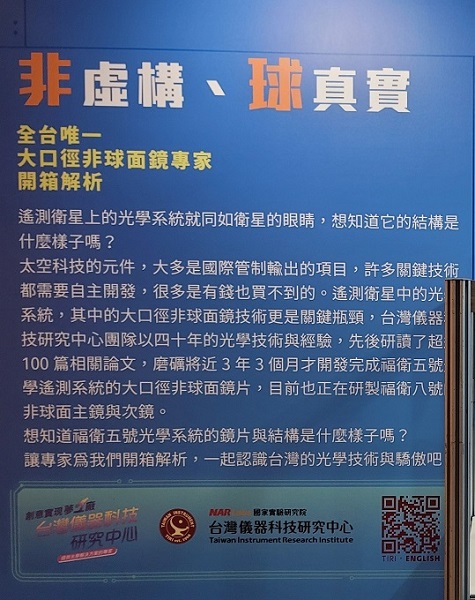
The Sole Expert in Large Aperture Aspheric Mirrors in Taiwan
Components for space technology are often internationally controlled export items, many of which are not available for purchase even with substantial funds, necessitating the independent development of key technologies. Among the optical systems in remote sensing satellites, the technology for large aperture aspheric mirrors is a critical bottleneck. Drawing on forty years of optical technology and experience, the team at the Instrument Technology Research Center in Taiwan has studied over 100 relevant papers and spent nearly 3 years and 3 months developing the large aperture aspheric mirrors for the optical remote sensing system of FORMOSAT-5. They are currently working on the development of the primary and secondary mirrors for FORMOSAT-8 as well.
Let's have the experts dissect and analyze the lenses and structures of the optical system of FORMOSAT-5, and get to know Taiwan's optical technology and pride together!
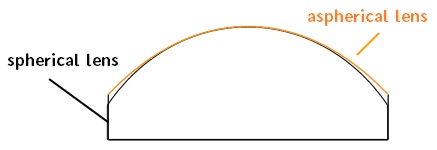
The Difference Between Aspheric and Spherical Mirrors
When using a spherical lens, light rays near the optical axis and those near the edge of the lens do not converge perfectly onto the same focal plane, resulting in spherical aberration. This causes the focal point to be blurry, resulting in lower-than-expected image quality. On the other hand, with an aspheric mirror, the curvature of the optical surface is altered, causing light rays near the center and the edge of the mirror to converge at the same point, eliminating spherical aberration and resulting in better image quality.
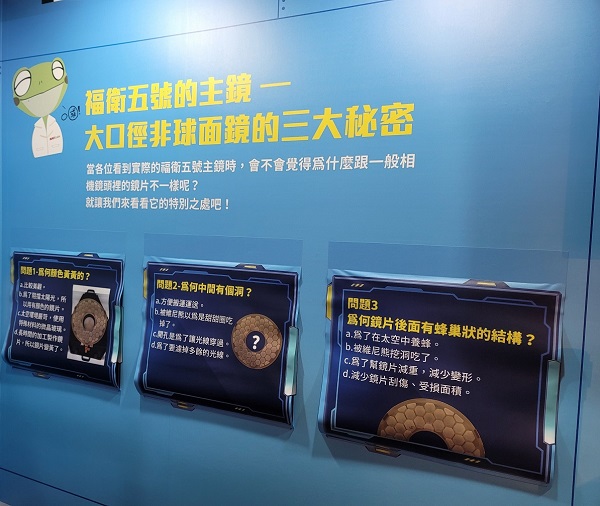
The Three Secrets of the Main Mirror of FORMOSAT-5 - Large Aperture Aspheric Mirror
Question 1: Why does the mirror have a yellowish tint?
Answer 1: This is due to the use of a special material, "ZERODUR® glass," which has a near-zero coefficient of thermal expansion in the extreme temperature variations of space. This glass material is commonly used in most remote sensing satellites and space telescopes.
Question 2: Why is there a hole in the center of the mirror?
Answer 2: The mirror adopts a Cassegrain optical system design, consisting of a concave primary mirror and a convex secondary mirror. The hole in the center of the primary mirror allows the light reflected by the secondary mirror to pass through and reach the image sensor at the rear for imaging.
Question 3: Why does the back of the mirror have a honeycomb-like structure?
Answer 3: Large aperture mirrors are typically heavy, and their own weight can cause deformation, affecting optical imaging quality. After complex engineering calculations, a honeycomb-like design was chosen. This design not only increases the structural strength of the mirror but also reduces its weight, thus reducing the cost of launching into space!
TASA
Introduction
In 1991, the National Space Program Preparatory Office (the predecessor of the Taiwan Space Agency) was established under the Executive Yuan to implement Taiwan’s national satellite program, establish space infrastructure, and train space professionals. In 2003, the National Space Program Preparatory Office was merged with other national laboratories under the umbrella of the National Applied Research Laboratories (NARLabs) and renamed as the National Space Program Office. Two years later (2005), it was renamed again as the National Space Organization.
The Space Development Act, Taiwan’s first national space act, was passed by the Legislative Yuan on May 31, 2021 and officially implemented on January 20, 2022. In the meantime, the government also initiated legislative work on the establishment of an administrative corporation for the National Space Organization. On April 19, 2022, the Act for the Establishment of the Taiwan Space Agency was passed after the Legislative Yuan’s third reading and came into effect on January 1, 2023. Originally affiliated with NARLabs, the National Space Organization was officially restructured into the Taiwan Space Agency (TASA) under the National Science and Technology Council.
TASA will focus on enhancing Taiwan’s space technology research and development capabilities, implementing national space policies and plans, and promoting Taiwan’s space activity and the development of the space industry.
Missions
1. Devise and implement national space technology plans.
2. Conduct research and development, technology transfer, and value-added application of space technology.
3. Promote international cooperation and interaction in space technology.
4. Assist in promoting the development of the space industry, pROViding guidance on industry technology and upgrades.
5. Conduct legal research related to space affairs.
6. Handle matters of site selection, front-end planning, commissioned operations, and management of national launch centers.
7. Review registration for launch vehicles and spacecraft and launch permits for launch vehicles.
8. Cultivate space technology talent, promote education in space science, and increase community participation.
9. Handle any other matters related to space development.
STPI
Introduction
The Secret Organization Driving National Development - Science and Technology Policy Research and Information Center (STPI)
Have you heard of the phrase "knowledge is power?" It means that by acquiring knowledge, we can have a more comprehensive understanding of issues and be able to think from different perspectives, giving us the ability to face and solve problems more effectively. Thus, STPI serves as the national science and technology policy think tank that pROVides our country with the power of knowledge!
Researchers at STPI study various data and reports from abroad to grasp global trends in technological development. Their research pROVides Taiwan with timely, professional, and objective analysis and recommendations, which are crucial in enhancing Taiwan’s technological competitiveness.
The Five Core Missions of STPI
1. To support the government on S&T policy planning.
2. To support the government on the development of the S&T industry.
3. To assist the government in evaluation and management of S&T programs.
4. To activate the innovation ecosystem of R&D achievements.
5. To pROVide integrated information services.
Understanding the World through Indicators - Policy Research Indicators DatabasE (PRIDE)
To simplify and facilitate policy planning and academic research, STPI has developed the Policy Research Indicators DatabasE (PRIDE). PRIDE collects indicator data related to technology, economy, lifestyle, business, and more from countries around the world. This online database allows researchers to have easy access to domestic and international indicator data, compare data, and create charts all in one platform. In addition, it transforms complex data into graphic images, thematic reports, and quiz games. Through these accessible and easy-to-understand formats, PRIDE enables the general public to quickly grasp global development trends.
PRIDE serves as a valuable resource for policymakers, researchers, and the public, empowering them to gain insights from comprehensive and up-to-date indicators. By utilizing this database, users can explore and analyze data, identify patterns, and make informed decisions. The user-friendly interface and interactive features of PRIDE enhance the accessibility and usability of indicator information, fostering a deeper understanding of the world's dynamics and facilitating evidence-based policymaking and research endeavors.
NCHC
Seeing through Your Text: Hands-on Activity
1. Text Recognition in Educational Science Institutions
This is the content generated by text recognition.
After a camera installed on the car takes pictures of its surroundings, you can see the location and introduction of this educational institution on the map of Taiwan. Check out how many places you've been to!
2. Text Recognition Test
(1) Choose a tablet you like or you can write down what you want to say on a whiteboard (text must be neat and not too small).
(2) Look at the camera above the monitor and take a picture.
(3) Your image and recognized text will appear on the monitor.
Isn't AI amazing?! There are also practical examples of text recognition being used in public safety. Let's go take a look!
Practical Applications of Text Recognition in Public Safety
NCHC's Investigation Assistance System and Intelligence Integration Platform assists the Taichung City Police Department rapidly gather location-based intelligence. Using AI text recognition technology, this platform rapidly identifies the location of street signs, which enables police officers to arrive at the scene of an incident as quickly as possible.
Background on the development of this recognition platform:
1. Utilized the Ministry of Education's database commonly used Chinese characters (currently 5021 characters). This data was integrated into the system after initiating text training and manual annotation.
2. Took pictures of street signs, road signs, and billboards during patrols with cameras installed on police cars. Captured images repeatedly during different times of the day and different weather conditions to train the platform with text of different appearances. (Currently, the platform has 330,000 street images).
3. Police cars equipped with GPS positioning worked with Google Maps to integrate data on Taichung City’s signage into the platform’s database.
How to conduct searches on the Smart Image and Text Recognition and Retrieval Platform
Step 1: Upload an image or enter keywords.
Step 2: The left column displays information on addresses and keywords.
Step 3: Access street view images that match the keywords and information in terms of time and location.
Step 4: Compare and identify the incident’s address with the surveillance images.
Past Exhibitions
TIRI
Introduction
The Taiwan Instrument Research Institute (TIRI) specializes in the development of key technologies in cutting-edge optics and advanced vacuum technology. TIRI offers an integrated, cross-domain service platform for the research and development of specialized instruments, making it a key partner for academic teams conducting groundbreaking research. TIRI is currently Taiwan's only research institute capable of pROViding customized services in specialized instruments for a wide range of academic fields. It is devoted to the development of "No.1 in Taiwan" and world-leading next-gen semiconductor processing equipment, cutting-edge systems in national defense, and remote sensing instruments. TIRI aims to train high-caliber technical professionals in the industry and continually impROVe the effective use of national resources for research.
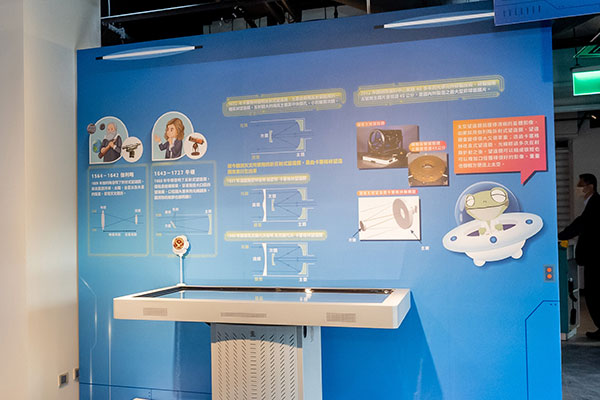
Galileo Galilei (1564-1642): In 1609, I invented the refracting telescope to observe celestial bodies such as the Moon, the Sun, Venus, and Jupiter..
Sir Isaac Newton (1643-1727): In 1668, I invented the reflecting telescope, which has an advantageous simple structure. Large aperture telescopes are also easy to manufacture. The larger the aperture, the more light that comes in, making the observed detailsmore clear!
In 1672, Laurent Cassegrain invented the reflecting telescope, which is composed of two differently sized reflecting mirrors. The larger reflecting mirror is called the primary mirror and has a central opening, and the smaller one is called the secondary mirror. The catadioptric telescope used for astronomy today is derived from impROVement of the Cassegrain telescope.
The Schmidt Cassegrain telescope was invented in 1931.
The Maksutov Cassegrain telescope was invented in 1940.
In 2012, TIRI utilized its 40plus years of optical component development experience to create the primary mirror for the FORMOSAT-5 satellite. With a diameter of 45 cm, it was the largest aspheric mirror manufactured in Taiwan.
A space telescope needs a large aperture to obtain clear images. If the telescope adopts a Galilean refractor design, it will become very large and cumbersome. With a Cassegrain modified telescope, after multiple reflections and refractions of light, the telescope can be reduced to a very short size or have an increased aperture to obtain good images. It is also lightweight and convenient to send into space.
Fresnel lens
A Fresnel lens divides the curved surface of a plano-convex lens into many small blocks, which are placed on a plane to reduce thickness. The biggest advantage of the Fresnel lens is that its size and weight are greatly reduced. Fresnel lenses also have magnifying capabilities. In addition, Fresnel lens principles are also used in the development of searchlights and lighthouses.
Pick up the Fresnel lens on the table and experience its magnifying effect!
Large Aperture Microscope Lens System for High Resolution 3D Brain Imaging (objective lens & tube lens)
The research team behind the High Resolution 3D Brain Imaging project at the Research Center for Applied Sciences, Academia Sinica carried out their research by impROVing on light sheet microscopy derived from the 2014 Nobel Prize in Chemistry. TIRI customized a large-aperture high-resolution optical microscope lens for "lattice light-sheet microscopy." Large-aperture microscopy lenses are extremely complex optical components, and their systems include both objective lenses and tube lenses. In order to overcome the imaging defects of a single lens, several lenses are combined into one lens to impROVe the imaging quality of the microscope.
The front end of the light sheet microscopy objective lens needs to be immersed in liquid used to preserve biological samples, and it must have a long working distance to capture a full 3D image of, in this case, a mouse brain. In addition to optical design, the environmental tolerance of this lens is more rigorous than an ordinary microscopy lens. The large-diameter microscopy system displayed here has a diameter of about 18 cm, which is much larger than that of an ordinary commercial microscope. It can be used to observe the neural structure and protein distribution of the brain.
TIRI has pROVided optical solutions with more than 45 years of R&D experience and has also customized special microscopy lenses with wide ranges of imaging and high spatial resolution. TIRI’s system can obtain a full layer of high-resolution images of a mouse brain in one shot, and can impROVe the imaging range and avoid time-consuming image stitching. It also can significantly impROVe the efficiency of imaging and research, which will help to further explore the brain and even solve human brain diseases in the future.
 Optical Design: Large-Aperture Microscope Lens System (objective lens & tube lens)
Optical Design: Large-Aperture Microscope Lens System (objective lens & tube lens)
Considerations for Construction on Sloping Terrain
In densely populated modern cities, where flat land is scarce, many houses are built on adjacent slopes or directly on sloping terrain. Which side of the mountain would you choose to build on?
“Downslope” refers to the side of a slope where the geological layers align with the slope's inclination. This type of terrain is more prone to sliding disasters. Developers near sloping areas may excavate the foot of the slope and construct retaining walls to gain more usable land. However, during earthquakes or heavy rainfall, there is a high risk of slope movement, causing the collapse of these retaining walls and potentially damaging neighboring buildings.
Not all sloping terrain is unsuitable for development. Before commencing construction, it is advisable to engage with professional engineers for site exploration and geotechnical investigation to assess the geological conditions. Based on factors such as slope gradient and soil composition, appropriate slope stabilization methods can be determined. Constructing retaining walls is a common approach to stabilize slopes. During construction, attention should be given to drainage and protection of the slope through vegetation. However, even in areas suitable for development, maintaining a proper distance between buildings and retaining walls is crucial.
How to Minimize Earthquake Damage to Buildings
There are two main ways to reduce the impact of earthquakes on buildings: seismic damping technology and base isolation technology, which can be observed by considering the magnitude of acceleration displayed on the screen.
Seismic damping technology:
Seismic dampers can be installed in buildings to absorb vibrational energy during an earthquake, thereby achieving a damping effect.
There are various types of dampers available, typically installed in the beams and columns of the building’s structural framework. They can consist of single diagonal braces or take a V-shaped or inverted V-shaped configuration, taking into consideration the spatial flow and arrangement of doors and windows. The effectiveness of seismic damping in a structure depends on the number and placement of the dampers. Generally, it is recommended to install dampers in at least half of the lower floors of a building to achieve optimal damping performance.
Base isolation technology:
The principle of base isolation technology is to separate the building as much as possible from seismic forces and disrupt the input of energy, thereby reducing the damage caused by earthquakes. This is achieved by installing isolation pads at the base or lower floors of the structure to isolate the seismic forces and mitigate the disturbance caused by earthquakes. Generally, buildings that need to maintain functionality during earthquakes, such as hospitals or high-tech facilities, are designed with either structural isolation or equipment isolation.
In the case of the building structure on the left, which does not have a base isolation system, it will sway and shake during an earthquake, with greater vibrations as the floors go higher. On the other hand, the building structure on the right is equipped with a base isolation system at the bottom. During an earthquake, the structure behaves like an object floating on the ground, with only the base experiencing movement relative to the ground, while the upper parts of the building experience significantly reduced levels of vibration.
NCREE
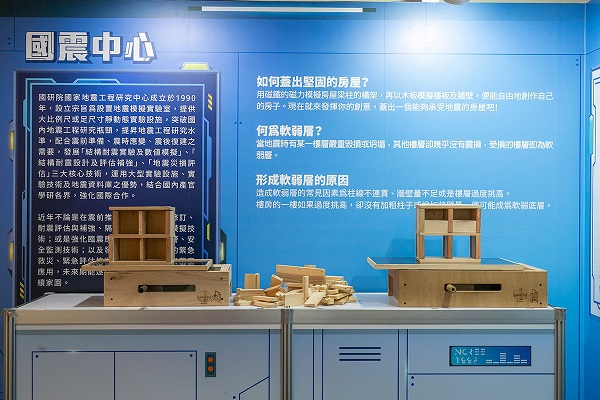
Introduction
The National Center for Research on Earthquake Engineering (NCREE), established in 1990, pROVides earthquake simulation laboratories and large-scale static and dynamic experimental facilities. Its mission is to overcome the country’s research bottlenecks in earthquake engineering, enhance the level of earthquake engineering research, and assist with pre-earthquake preparedness, in-event response, and post-earthquake recovery. NCREE particularly focuses on the development of three core areas: structural seismic experimentation and numerical simulation; seismic design, assessment, and retrofitting of structures; and seismic damage assessment. It leverages the advantages of large-scale experimental facilities, experimental techniques, and earthquake databases, while also collaborating with various sectors including industry, government, academia, and research, and strengthening international cooperation.
In recent years, significant progress has been made in various aspects related to earthquake preparedness and response in Taiwan. This includes revising seismic design codes and regulations, seismic assessment and retrofitting, base isolation technology, and scenario simulation techniques. Efforts have also been made to strengthen earthquake early warning systems and safety monitoring technologies for effective emergency response. Additionally, there have been advancements in emergency disaster relief and rapid assessment techniques to facilitate post-earthquake recovery.
These efforts have yielded concrete results and practical applications. NCREE’s goal for the future is to gradually transform Taiwan into a resilient and sustainable homeland in terms of earthquake resilience.
How to Build a Sturdy House?
By imitating the framework of house beams and columns with the force of magnets, and using wooden boards as floors and walls, you can freely create your own house. Now, unleash your creativity and build a house that can withstand earthquakes!
What is a Weak Story?
When an earthquake occurs, a certain floor may be severely damaged or collapse while other floors have almost no damage. The damaged floor is referred to as a weak story.
Causes of Weak Stories
Common factors causing weak stories include inconsistent column alignment, insufficient wall quantity, or excessive height between floors.
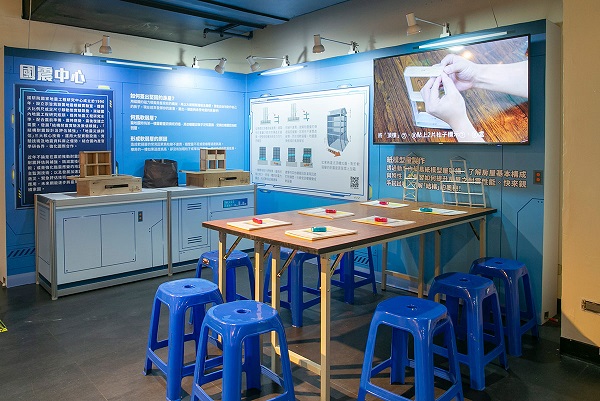
If the ground floor of a building is excessively elevated without reinforcing columns or increasing wall quantity, it may become a weak story.
In a straight and continuous manner, the weight of a properly structured building can effectively transmit down to the foundation from the top floor, ensuring uniform and stable distribution of forces throughout the entire structural system.
When columns are not properly aligned, the path for weight transmission in a building becomes more complex, easily leading to damage at non-aligned points and forming weak stories. This increases the risk of earthquake damage and collapse.
Ground-floor commercial spaces often have fewer walls and columns in order to facilitate business operations, resulting in reduced seismic resistance for that floor and creating a weak ground floor structure.
Removal of walls due to interior design or other reasons on other floors of a building can also result in those floors becoming weak stories.
If illegal rooftop additions are made, the seismic resistance of weak stories becomes even worse.
Creating a Paper Model House
By crafting a simple paper model house, you can grasp the fundamental structure and characteristics of a building, as well as learn how to enhance its earthquake resistance. Come and give it a try to uncover the mysteries of "structure!"
TORI
Introduction
The core mission of the Taiwan Ocean Research Institute (TORI) is to support marine scientific research. TORI collects data from the surrounding waters of Taiwan and pROVides services in response to the needs of the academic community and government policy. Additionally, TORI promotes the local marine industry and builds international research platforms, making it a key driver for Taiwan's marine science. Furthermore, TORI is committed to marine education, organizing diverse and creative marine science activities to cultivate talent in marine technology and spread knowledge about marine science.
Would you like to know what treasures we have discovered in the ocean? Let's go and find out! Everything is marked on the nautical chart.
1. Seek: Search for the treasure points indicated on the nautical chart (a total of 6).
2. Scan: Scan the QR code next to the treasure point.
3. Write: Enter the latitude and longitude coordinates of the treasure point.
4. Click: Click the link to unveil the legend of the treasure.
NCHC
Unboxing Taiwan's First Homemade Supercomputer - Formosa I
Formosa I was Taiwan's first cluster computing system, completed in 2003. It consisted of 150 servers with dual CPUs, delivering a theoretical peak computing power (Rpeak) of up to 1.68 Tflops and a measured maximum computing power (Rmax) of 997 Gflops. In November 2003, it ranked 135th in the TOP500 list of the world's most powerful supercomputers, making it Taiwan's top-ranked supercomputer in terms of computing power at that time.
What is a Cluster?
A cluster is a type of "parallelism" technology application that utilizes multiple small computers connected through local and wide area networks to form a larger distributed computing architecture, effectively handling parallel tasks. Compared to large-scale mainframe computers of equivalent capacity, cluster deployment technology has inherent cost advantages. Currently, in the TOP500 list, nearly 90% of computing systems utilize this type of deployment technology.
Formosa I consisted of 150 servers with dual CPUs, totaling 300 Intel Xeon 2.8 GHz CPUs. It achieved a theoretical peak computing power (Rpeak) of up to 1.68 Tflops and a measured maximum computing power (Rmax) of 997 Gflops.
Introduction
The National Center for High-performance Computing (NCHC) was established in 1991 and is home to Taiwan's only shared large-scale computing platform and academic research network infrastructure. It plays a leading role in advanced cloud technology integration, encompassing computing, storage, networking, and platform integration. NCHC pROVides integrated cloud services such as high-speed computing, high-quality networking, high-performance storage, big data analytics, and scientific/engineering simulations to various sectors in Taiwan. Through its professional expertise and platform services, NCHC nurtures talent in high-performance computing across academia, research, and industry.
1. CPU (Central Processing Unit) - The main component in a supercomputer responsible for executing instructions, performing logical operations, and conducting calculations. It is crucial for determining program execution speed.
2. Cooling Fan - A fan in the computer case that helps cool the system by dissipating heat.
3. Hard Drive - The hardware used for storing digital content and data on a computer, such as traditional Hard Disk Drives (HDD) or newer Solid-State Drives (SSD).
4. Power Supply Unit - The device that supplies power to the computer components.
5 & 6. I/O (Input/Output) Interface - Front: User interface including software, hard drives, USB, CD ROM, etc. Rear: Various connectors including network ports, KVM connectors, and power sockets.
7. Ribbon Cable - Flexible printed circuit board (FPC) used for data transmission in movable parts and active areas.
8. Northbridge Chipset - High-speed channel (Memory Controller Hub - MCH) used for communication with the CPU.
9. Southbridge Chipset - Low-speed channel (I/O Controller Hub - ICH) used for communication with I/O devices.
10. Optical Diagnostic Tool - Assists in identifying faulty components by pROViding diagnostic feedback when pressed.
11. Memory - The short-term storage area of the system that holds information currently being used by the computer for quick access.
Supercomputer TAIWANIA
Origin of the Name TAIWANIA: Taiwan Fir (of the genus Taiwania) is a native tree species in Taiwan known for its towering height. Naming the supercomputer TAIWANIA signifies its powerful computational capabilities.
How fast is a supercomputer? Taking TAIWANIA 2 as an example, it can perform up to 9,000 trillion floating-point operations per second. This level of computational power is equivalent to every person on Earth performing one multiplication operation per second. Even if they were to continue non-stop for 24 hours, it would take 13 days to complete. However, TAIWANIA 2 can accomplish it in just 1 second.
The speed unit for supercomputers is measured in floating-point operations per second (FLOPS), which represents the number of decimal-point calculations (addition, subtraction, multiplication, division) performed per second. The TAIWANIA series supercomputers belong to the Peta-scale range, with a unit of Pflops, which means to perform one quadrillion (10¹⁵) floating-point operations per second, or 1,000,000,000,000,000 FLOPS.
NLAC
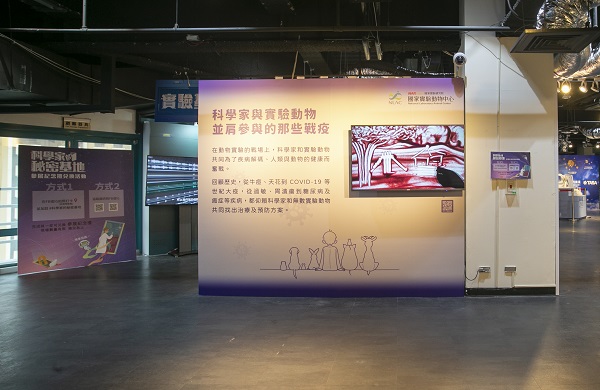
Scientists and Lab Animals Battling Side by Side
Looking back through history, from smallpox and cowpox to century-defining pandemics like COVID-19, and from allergies, ulcers, and diabetes to cancer and other diseases, scientists have relied on countless lab animals to discover treatments and prevention strategies.
|
Diphtheria Treatment
|
Guinea Pigs, Rabbits, Mice
|
|
Discovery of Allergic Reactions
|
Dogs, Rabbits
|
|
Classical Conditioning & Gastric Acid Research
|
Dogs
|
|
Polio and Yellow Fever
|
Monkeys, Mice
|
|
Virus Isolation for Vaccine Development
|
Monkeys, Mice
|
|
Insulin for Diabetes Treatment
|
Dogs
|
|
Unraveling the Causes of Gastric Ulcers
|
Pigs
|
|
Organ Transplantation: Aseptic Surgery/Blood Transfusion Techniques/Blood Vessel Suturing/Immune Tolerance
|
Dogs
|
|
Discovery of GPS-Like Cells in the Brain
|
Rats
|
|
Cancer Treatments
|
Mice
|
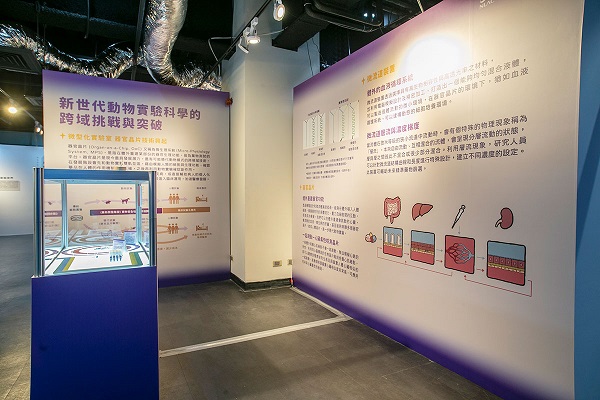
The Rise of Miniaturized Laboratories and Organ-on-a-Chip Technology
An Organ-on-a-Chip (OoC), also known as a Micro-Physiology System (MPS), involves the in vitro recreation of specific organ physiological functions to test drugs. Initially, this process was conducted alongside animal experiments. First, it simulates human cell physiology to confirm the accuracy of drug mechanisms. Subsequently, animal experiments are employed to verify what any side effects may be. In certain situations, organ-on-a-chip technology may gain regulatory appROVal to enter clinical trials directly, accelerating medical advancements.
Microfluidic Devices and an Extracorporeal Blood Circulation System
By selecting materials with high biocompatibility and transparency and utilizing computer-aided design and precision manufacturing, microfluidic devices can be created. These devices uniformly mix fluids and generate a controlled microenvironment. Within the context of organ-on-a-chip environments, this setup mimics a blood circulatory system, facilitating dynamic cell culture conditions.
Microfluidics and Concentration Gradients
In micro-sized channels, fluids exhibit a unique physical phenomenon called "laminar flow." In laminar flow, initially free-flowing fluids that would normally mix with each other behave by forming layers with minimal mixing. Researchers leverage this laminar flow phenomenon by designing microchannel curves or lengths to set different concentrations.
Organ-on-a-Chip: In Vitro Organ Function Reconstruction
Organ-on-a-chip technology allows for the in vitro integration of human cells to simulate fluid dynamics, pressures, and interactions within organs. If successful, this technology can recreate beating hearts, flowing blood, or malfunctioning livers; multiple chips can even be connected to further replace animal experiments.
Heart Toxicity Testing Chip with Synchronized Heartbeat
Typically, cultured cardiac muscle cells do not beat in unison, making it challenging to simulate a heartbeat. Through the use of concentrically structured biochips, cardiac muscle cells can be cultured to grow in an organized manner, exhibiting synchronized contractions similar to a real human heart. This technology, with its heart-like contraction frequency, is applicable in assessing heart toxicity.
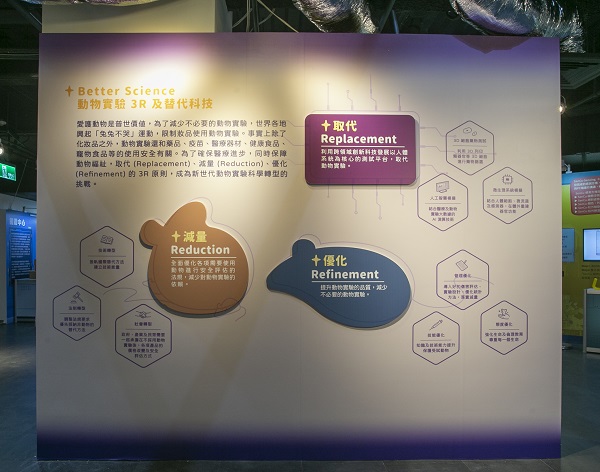
The 3Rs and Alternative Technologies in Animal Testing
To reduce unnecessary animal experimentation, a global movement known as the "Bunny Doesn't Cry" campaign emerged, aiming to restrict the use of animals in cosmetics testing. In reality, animal testing also pertains to verifying the safety of pharmaceuticals, vaccines, medical devices, health foods, and pet products. To ensure medical progress while safeguarding animal welfare, fulfilling the 3R principles of Replacement, Reduction, and Refinement has become the challenge to meet in order to transform next-generation animal experimentation science.
Replacement
Utilizing innovative cross-disciplinary technologies to develop alternative testing methods to replace animal experiments. For example, integrating AI algorithms with medical and animal experimentation big data.
Reduction
Modifying regulations that involve reliance on animal testing for safety assessments, thereby reducing dependence on animal experiments. This includes prioritizing the adoption of non-animal assessment methods through international collaboration, adjusting regulations, and addressing changes in product pricing and safety assessment methods following the elimination of animal testing – a responsibility shared by governments, industries, and the public.
Refinement
Enhancing the quality of animal experiments and minimizing those that are unnecessary. This involves implementing better harm assessment procedures and optimizing experiment designs and statistical methods to achieve animal reduction, enhance knowledge and techniques, protect test animals, strengthen bioethics education, and respect every single life.
TSRI
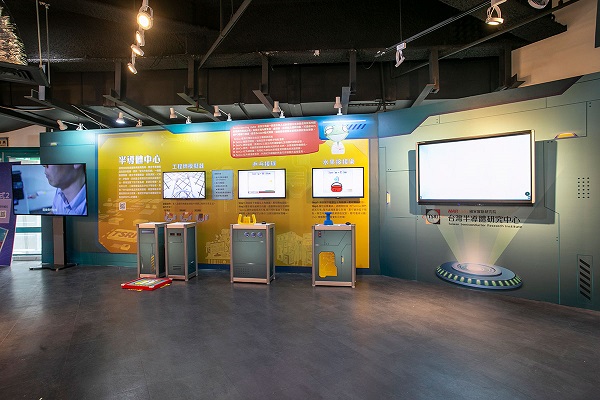
Introduction
To keep pace with technological trends and emerging applications, Taiwan Semiconductor Research Institute (TSRI) integrates semiconductor manufacturing and design to pROVide end-to-end verification services from components to systems. TSRI has established an open platform for semiconductor manufacturing, packaging, testing, IC design, silicon intellectual property, and system integration, catering to next-generation technologies such as advanced transistors, novel memory, high-power devices, 3D integrated circuits, silicon photonics, etc. The Institute’s focus lies in innovative products and application services for the next generation, aiming to drive diverse developments in the semiconductor industry and achieve its vision as a world-class semiconductor design and manufacturing research center.
Engineer Simulator
Game Instructions: Step into the virtual cleanroom and experience the daily life of a semiconductor engineer.
Game Process:
1. Enter the Air Shower
2. Enter the Cleanroom
3. Complete Tasks and Objectives
(1) Machine Maintenance
(2) Placing Wafer Boxes into Machines
4. Walk to the Exit Point to Leave
Ping Pong
Step 1 - Click the green flag in the upper left corner of the screen with your mouse to start the game.
Step 2 - Hold the controller with both hands. Once the game starts, tilt the "SenCu-Absolute Attitude Sensing Cube" left or right to control the paddle at the bottom of the screen. Return the ball to score points! Be careful not to miss the ball!
Catching Fruit
Step 1 - Click the green flag in the upper left corner of the screen with your mouse to start the game.
Step 2 - Hold the stamp, and, once the game starts, use the illuminated part of the "SenCu-Color Sensing Cube" to cover the color blocks. This will change the color of the basket. Match the falling fruits and vegetables with the color of the basket to score points! Be careful! Catching the wrong color will deduct points!
The SenCu-Sensing Cube is developed by integrating embedded hardware and software with sensor application technology. Each cube contains a battery, processor, sensors, and communication capabilities. It can communicate with a PC through WiFi and features Scratch programming development, allowing users to unleash their creativity and realize endless possibilities from their imagination.
The SenCu-Sensing Cube currently comprises five types of sensing systems:
- SenCu-Fine Particulate Matter: Detects the concentration of fine particulate matter in the air.
- SenCu-Absolute Attitude: Senses motion changes along the X, Y, and Z axes and the absolute attitude of objects.
- SenCu-Color: Determines the RGB proportions of light shades irradiated into the sensor to infer object colors.
- SenCu-Infrared Distance: Measures the distance between objects and the sensor using infrared reflection.
- SenCu-Infrared Temperature Sensing: Measures non-contact temperature using infrared radiation heat.